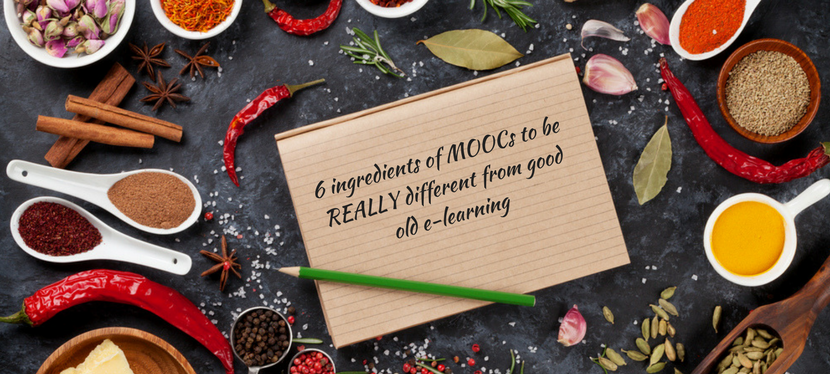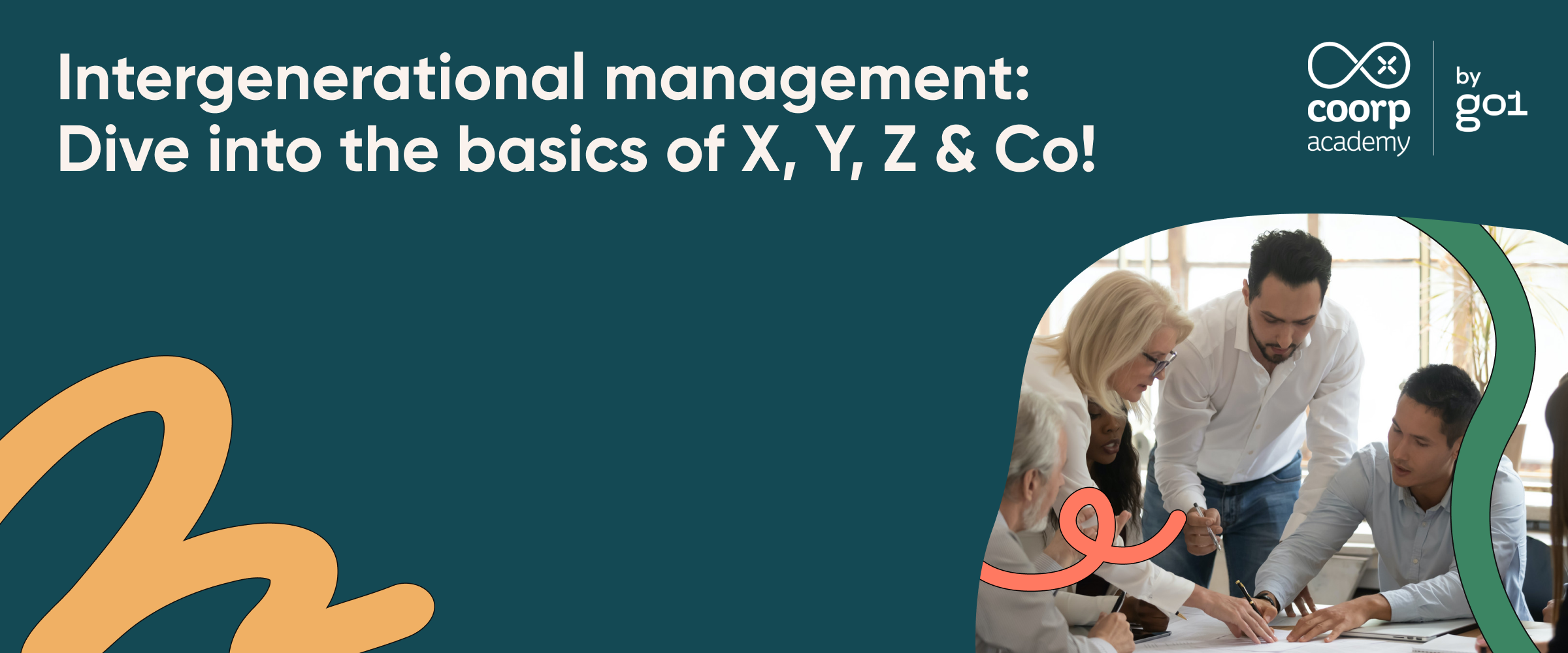6 ingredients of MOOCs to be REALLY different from good old e-learning
Learning Innovation

Are MOOCs a REAL innovation compared to e-learning? This was the question that I was asked to give a short talk on during the “MOOCs and Mobile Learning Meeting” which was organised by the International Learning & Development Institute in Paris in late March. More than 50 Human Resources Managers came together with experts on digital learning to reflect on (the future of) their corporate training programmes. My answer was based upon the following arguments:
MOOCs have had an impressive rise in terms of the number of learners which distinguishes them from former e-learning as to their massiveness. But the question stated by the organisers is very valid: more is not necessarily better and even less it is innovative.
Saying any MOOC would or could be declared innovate compared to any e-learning, would be pure hubris. Prof. Pierre Dillenbourg, European MOOC luminary based at Swiss EPFL (Ecole Polytechnique Fédérale de Lausanne) has put it very well when saying “Good MOOCs are (in general) better than bad MOOCs” during the Learning Analytics Workshop at EPFL back in 2015 already. There is simply no point in comparing MOOCs versus e-learning overall, neither from a practitioner nor from a scientist point of view. We rather need to study and apply the conditions under which a MOOC is innovative and massively better than e-learning, i.e. we need to understand what is a “good” MOOC.
MOOCs need to overcome the main shortcomings of e-learning…
flexible
E-learning is often composed of long and linear entities and does not provide much choice to the learner. (This also explains why the learner experience is often described as boring.) MOOCs need to let learners choose when and how to learn but also create their learning path according to their individual conditions. Data on MOOC learners shows clearly that most learners are not participating in the whole course. In fact, MOOC participants are often selectively picking only those content parts that are useful for them or take the course in an alternative order while still others stay passive and consume some videos only. If you participate in a MOOC only selectively, you are not to be considered a “dropout”, but rather as a learner who is building the most relevant learning experience for himself.
For corporate training more specifically, the argument goes: Your learners do learn in a self-directed manner anyways; they take that MOOC on urbanism and mobility or Big Data in their free time because they are intrinsically motivated to do so. Companies should exploit rather than ignore their learners’ motivation.
micro
Flexible learning needs short units that can be independently used to compose your own learning journey in a way that is compatible with your (busy) work life. Video has imposed itself as the main format for delivering micro-learning content. And research has confirmed the need for short units: Learners do not watch entirely videos that are longer than six minutes. And the variance between learners regarding the percentage of the video effectively seen increases dramatically with videos longer than three minutes (see Guo et al. 2014).
mobile
If learners are to be enabled to sustain their learning journey whenever and wherever they want, it is essential to propose a good mobile learning experience. Only 12% of corporate training content, however, is mobile. This is even more alerting when considering that 35% of employees use their smartphone to solve professional challenges. If learning is to support working and performance, then the learning experience needs to adapt to how people work and not the other way around.
social
Generally speaking, the social dimension does not exist with traditional e-learning. And this is true although the Learning Sciences have accumulated evidence on the effectiveness of collaborative learning as a pedagogical mechanism already since the 1990ies. Social learning works by means of peer tutoring, social facilitation, socio-cognitive controversy, co-construction of ideas and many more. Innovative MOOCs leverage the potential for peer-to-peer learning and even develop new opportunities like using crowdsourcing as a social approach to content enrichment as well as content creation or even generation of innovation.
… and go beyond!
Apart from eliminating e-learning’s pain points, innovative MOOCs incorporate the latest codes of user experiences in the web. Two examples of this are gamification and personalisation.
gamified
Many MOOC platforms use gamification mechanisms at least to some degree. Gamifying the learner experience means using game mechanics, i.e. the working principles in games like levels, status, countdown, or rewards and bonuses, to engage and motivate users to achieve the learning goals. Most MOOC platforms do, however, not go any further than providing badges and a leaderboard. The most advanced MOOC providers propose mini-games, competitions or life systems. Evidence on the effectiveness of gamification in corporate training and particularly of Coorpacademy’s “Battle Mode” was provided in our 2016 study showing higher values of Battle players versus non-players on engagement and performance indicators (see Dehler Zufferey et al., 2016).
adaptive
Massive populations are inevitably more heterogeneous. Not only are learners very different in terms of their prior knowledge and current competence level,but also very different in their learning habits and preferences. Making learners more self-regulated by providing more flexibility is not the whole answer to this challenge. MOOCs need to innovate such that they provide the most relevant, efficient and enjoyable learning journey to each individual learner. The tough nut to crack here is the right blend between machine-powered intelligence and learners’ self-determination. The most powerful artificial intelligence will not boost learning if the learners do not understand and cannot act on their learning journey. We are currently working on machine learning solutions to integrate on our platform in a learner-centered way.
What else makes a MOOC innovative?
These are our current six most important elements of innovative MOOCs. What else makes a “good” MOOC for you? Please share your thoughts such to contribute to the joint desire to make MOOCs even better!


